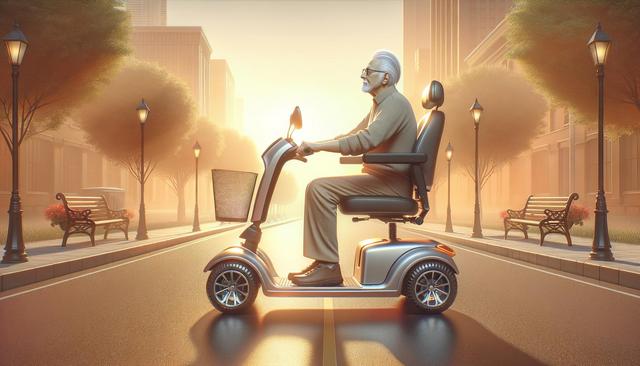Understanding Mobility Scooters and Their Purpose
Mobility scooters are motorized devices designed to assist individuals who have difficulty walking or moving over long distances. They are particularly beneficial for seniors, people with disabilities, or those recovering from injury. Unlike wheelchairs, mobility scooters are typically used for longer outdoor trips and provide greater comfort and range, thanks to their battery-powered operation and ergonomic design. These scooters come in various styles, from compact travel models to heavy-duty versions, each tailored to different user needs.
One of the main advantages of mobility scooters is their ability to restore a sense of freedom. Users can go shopping, visit friends, or simply enjoy a ride in the park without relying on others. This boost in independence often contributes to improved mental well-being and overall quality of life. With models available for indoor use, outdoor terrain, and even air travel, mobility scooters are a versatile tool for enhancing daily living.
Types of Mobility Scooters Available
There are several types of mobility scooters on the market, each designed for specific use cases. Understanding the differences can help potential users select a model that aligns with their lifestyle and mobility requirements.
- Travel scooters: Lightweight and foldable, ideal for transport and storage. They are best for short trips and indoor use.
- Three-wheel scooters: Offer excellent maneuverability, especially in tight indoor spaces.
- Four-wheel scooters: Provide greater stability, making them suitable for outdoor use and uneven terrain.
- Heavy-duty scooters: Designed for users needing additional support, including higher weight capacities and larger batteries for extended range.
Each type has its own strengths, so it’s important to assess the user’s daily routine, travel distances, and terrain where the scooter will be used before making a choice. Consulting with a mobility aid specialist can also help in matching the right model to the user’s specific needs.
Key Features and Functional Considerations
When choosing a mobility scooter, a range of features should be taken into account to ensure comfort, usability, and performance. These features can make a significant difference in the scooter’s effectiveness and the user’s experience.
- Battery life: Determines how far the scooter can travel on a single charge. Longer battery life is important for users who plan to use the scooter extensively during the day.
- Seat comfort: Adjustable and padded seats with armrests enhance user comfort, especially for longer rides.
- Portability: Some models can be disassembled or folded for easier transportation in vehicles.
- Controls: Easy-to-use tillers, speed controls, and safety features like automatic braking improve user confidence and safety.
Additional accessories such as baskets, cup holders, and weather covers can further enhance the utility and convenience of a mobility scooter. Users should also consider whether their scooter will be used indoors, outdoors, or both, as this influences the size, power, and features required.
Safety and Maintenance Guidelines
Safety is a critical aspect of using a mobility scooter. While these devices are generally safe, proper usage and routine maintenance are essential to ensure reliability and reduce the risk of accidents.
- Regular checks: Users should perform frequent checks on tires, brakes, and battery connections.
- Charging: Keeping the battery fully charged and avoiding complete discharge helps extend battery life.
- Driving skills: Users should practice driving in open spaces before navigating crowded or uneven areas.
- Weather precautions: Avoiding wet or icy conditions can prevent slipping and damage to electrical components.
Routine servicing by a qualified technician is recommended at least once a year. This can help identify wear and tear or issues that might not be immediately visible. Keeping the scooter clean and storing it in a dry place also contributes to durability and long-term performance.
Financial and Accessibility Considerations
Mobility scooters can be a significant investment, so understanding the financial and accessibility options available is important. Depending on the user’s location, healthcare systems or insurance providers may offer partial or full reimbursement for mobility aids, including scooters.
In some cases, charitable organizations or local government programs provide funding or low-cost rental options for individuals who qualify. It’s worth researching these opportunities to reduce out-of-pocket expenses. Additionally, many scooter providers offer payment plans to make the purchase more manageable.
- Insurance coverage: Check whether mobility equipment is covered under medical insurance plans.
- Grants and subsidies: Look into community programs or non-profits that support mobility aid funding.
- Tax deductions: Medical expenses related to mobility aids may be tax-deductible in some regions.
Accessibility also extends to the environment where the scooter will be used. Ensuring that homes, public transport, and commonly visited places are scooter-friendly can enhance usability and satisfaction. Ramps, wide doorways, and accessible restrooms all contribute to a better mobility experience.




Leave a Reply